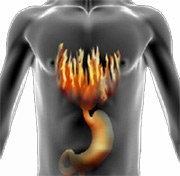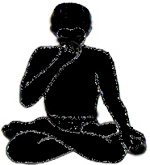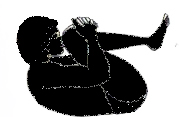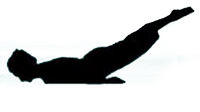Introduction

Sometimes a lack of sleep or change in sleeping schedule also causes the problem of acidity. People with weak digestive system and those who are sensitive to certain foods are always at higher risk of getting a problem of acidity. As food doesn't digest easily it leads to secretion of extra acid and hence creates an imbalance of acid level in our body. However, by taking few simple steps, we can avoid this imbalance of extra deposition of acid in our body. Take your dinner at least 1 hour before going to the bed.
Smoking and drinking of alcoholic drink should be avoided. Carbonateddrinksare also not good for the health and therefore they should not be consumed in excess. Avoid taking spicy food, fatty foods, and unhealthy (canned and packed) food. Consumption of banana on a regular basis avoids the problem of acidity. A well hydrated body is less prone to the diseases and therefore you should drink plenty of water everyday. Water also helps in easy digestion of food that we eat and therefore is helpful in avoiding the problem of acidity. Consumption of mint juice after taking meal is very effective in avoiding acidity.
Yoga and Acidity
Yoga is an ancient Indian body of knowledge that dates back more than 5000 years ago. The word "Yoga" came from the Sanskrit word "yuj" which means "to unite or integrate." Today, interest in heath consciousness is attracting people from all over the world to earn better health in body and contentment in mind. Now a day's people are looking towards natural ways of approach in health & happiness. This search has brought YOGA in our daily life. Yoga keeps our inner body and inner mind clean & clear to lead a life of benevolence. Practice of yoga nidra, concentration and meditation gives the best result. It is a good practice to seat in Vajrasana from five, ten to fifteen minutes after meals. This strengthens digestive power so, flatulence and constipation doesn't result. This completely removes the main cause for production of acids. The process of digestion is performed properly and perfectly by pranayama.You should also be careful with your diet. Eat small meals at regular intervals, eat slowly and chew thoroughly. Avoid heavy, oily food and eat steamed and easily digestible food. By following the yoga routine and a yogic diet, it is possible to cure acidity problems so get started as soon as you can.
YOGA POSES FOR ACIDITY
Hero's pose
This is a pose you can meditate in. It also stretches the knees. This yoga posture is quite often performed for meditation instead of sitting with the legs crossed. It reduces fat around the thighs & calves and it mainly improves the digestion.
Thunderbolt Pose
Thunderbolt Pose is an important meditation posture so as to give the body an upright and straight posture without any extra effort. This pose is even employed among Muslims and Zen Buddhists as prayer and meditational posture.
Bow pose
The alternating stretching and releasing of the abdominal muscles increases blood flow to this area and aids all sorts of digestive disorders and discomforts. The Bow works all parts of your back simultaneously. The pose is so named because as you hold it, your body is bent back like a bow and your arms are held straight and taut like a bowstring.
YOGA ASANAS FOR APPENDICITIS
ANULOMVILOMPRANAYAM

Anulom Vilom Pranayam is also known as Nadi Shodhana Pranayama or alternate nostril breathing. By the practice of this asana the whole nervous system is cleansed and toned.
Steps
- One should sit comfortably in padmasana or sukhasana, keeping back straight and breathing normally. Form the pranayam posture with right hand.
- Close your right nostril with your right thumb and exhale slowly through the left nostril.
- Now inhale, slowly to your maximum capacity and then close left nostril with your ring and little finger and lift the thumb off the right nostril and exhale slowly through the right nostril.
- Then again inhale slowly through the right nostril and close it with thumb and lift your ring and little finger from left nostril and exhale slowly.
SHAVASANA

Steps
- Lie on the back.
- Keep your spine, navel & pelvic in one line.
- Keep feet apart.
- Keep arms on the each side of body, palms facing to sky.
- Keep neck right or left side.
- Close your eyes & slowly try to concentrate each part of the body & try to relax that part.
- Breath normally.
PAVAN MUKTASANA

Pavan Muktasana strengthens the abdominal muscles and liver, spleen, pancreas and stomach. It eases excess gas from the abdomen. Persons suffering from constipation must do this after drinking lukewarm water for proper evacuation of bowels in the morning. Pavan Muktasana is the best asana to expel gas by compression of the abdomen.
Steps
- Keep your hands by the side of your body in a supine position. While inhaling, raise both your legs to 90 and bend them at the knees.
- Make a finger-lock with both your hands around them, a little below the knees. While exhaling, bring your thighs close to the chest by contracting the abdominal muscles. Maintain this posture for a few seconds.
- Then return to the original posture in the reverse order as Ardha Pavan Muktasana. Repeat the asana three to four times.
PASCHIMOTTANASANA

Paschimottanasana is a fine stretching exercise of the body. In one continuous movement, almost all the posterior muscles get fully stretched and relaxed. This helps to improve the functions of the abdominal organs and sets right respiratory disorders. It also helps to improve memory.
Steps
- This posture involves stretching of the posterior muscles of the body.
- While sitting, stretch your legs forward and keep them close to each other. Bend a little forward, make hooks of your fingers and hold the big toes on the respective sides.
- While exhaling, bend forward stretching the trunk along the thighs. Rest your on the knees, which should be kept straight.
- Gradually, the tense muscles can be made supple for securing the complete posture. Inhale and return to the original position
SARVANGASANA

Steps
- Lie on the back quite flat. Slowly raise the legs.
- Lift the trunk, hips, and legs quite vertically. Support the back with the two hands, one on either side. Rest the elbows on the ground. Press the chin against the chest.
- Allow the back-shoulder portion and neck to touch the ground closely. Do not allow the body to shake or move to and fro. Keep the legs straight.
- When the Asana is over, bring the legs down very, very slowly with elegance and not with any jerks.
- In this Asana the whole weight of the body is thrown on the shoulders. You really stand on the shoulders with the help and support of the elbows.
- Retain the breath as long as you can do with comfort, and slowly exhale through the nose.
SALABHA ASANA

Steps
- Inhale slowly but deeply through both the nostrils and retaining the breath make your head straight and put the chin on the floor (use a folded towel underneath the chin). Tighten both the legs and lift them up as high as you easily can. Do not bend the knees.
- Stay in the same posture for 5 to 6 seconds.
- Exhale and simultaneously lower the legs slowly to the floor. Do not drop the legs. By the time the legs touch the floor you should finish exhaling.
Diseases Related to Virgo |
||


